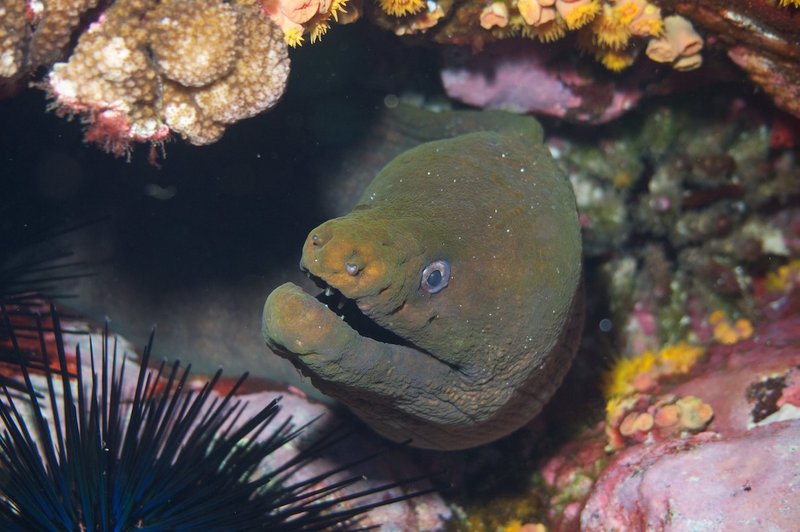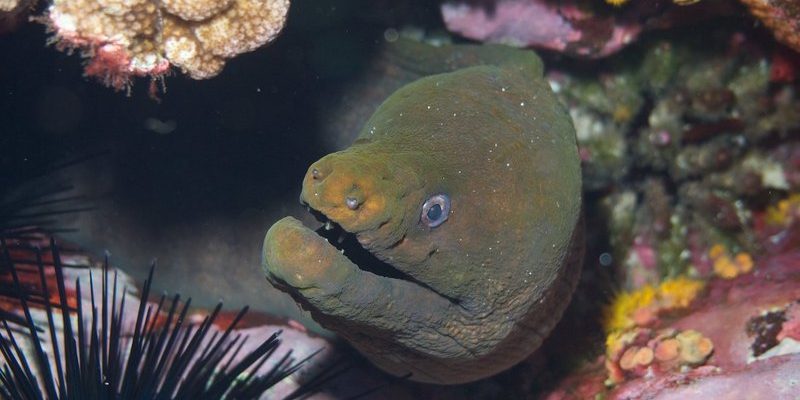
The moray eel, with its sleek body and sharp teeth, isn’t just an ocean predator; it’s also a barometer for the health of our oceans. As the waters warm due to climate change, these eels face challenges that affect their survival and habits. So, let’s dive in and explore how climate change is impacting the moray eel and what that means for our oceans and us.
Rising Water Temperatures
One of the most immediate effects of climate change is the increase in ocean temperatures. For moray eels, warmer waters trigger several changes in their behavior and health. You might be wondering, “How does that affect them?” Well, let’s break it down.
Moray eels are ectothermic, meaning their body temperature matches the temperature of their surroundings. When the water gets too warm, it can stress these eels. They might become less active and less efficient at hunting, which could lead to starvation. Imagine trying to run a marathon on a scorching day without enough water. That’s what these eels are facing with rising temperatures.
Additionally, warmer waters can lead to changes in the ecosystem. For instance, if the reefs where moray eels live start to die off due to heat stress, the eels will have fewer places to hide and hunt. This can increase their vulnerability to predators and make their daily survival much harder.
Ocean Acidification and Its Impact
Another consequence of climate change is ocean acidification. As the atmosphere warms, more carbon dioxide is absorbed by the oceans, leading to increased acidity. This change can have a profound effect on marine life, including moray eels.
You might be thinking, “What’s the big deal about acidity?” Well, many marine species, especially those that build shells or skeletons, struggle to survive in acidic waters. Coral reefs, which provide essential habitat for moray eels, are highly sensitive to acidity. As these reefs weaken and decline, the eels lose their homes. It’s a bit like living in a cozy apartment, only to find the building crumbling around you.
Additionally, the overall health of the marine food web can deteriorate. If the smaller fish and organisms that moray eels feed on start to decline, the eels will have a harder time finding food. This ripple effect shows just how interconnected these ecosystems are.
The Role of Coral Reefs
Coral reefs are like vibrant underwater cities, bustling with life. They provide shelter and hunting grounds for moray eels and countless other marine species. However, climate change poses a serious threat to these ecosystems.
Coral bleaching is one of the most visible effects of climate change on reefs. When water temperatures rise, corals expel the algae living in their tissues, which give them color and nutrients. This process leaves them white and vulnerable. For moray eels, if the coral reefs decline, they lose critical habitat. It’s a tragic domino effect: dying reefs mean fewer hiding spots, less food, and ultimately fewer moray eels.
Moreover, healthy coral reefs help protect coastlines from erosion and storm damage. So, the decline of these reefs doesn’t just hurt the eels; it impacts coastal communities, tourism, and fisheries too. Preserving these ecosystems is vital for everyone.
Changes in Migration Patterns
You might be surprised to learn that climate change can also affect the migration patterns of marine species, including moray eels. As water temperatures rise and currents shift, these eels might find themselves wandering into unfamiliar territories.
Just like how birds migrate to find warmer climates during winter, aquatic species often move to find suitable habitats. If moray eels start to migrate to different areas, they may encounter new predators or compete with other species for food. Imagine moving to a new neighborhood but finding out that the local hangouts are already crowded. That’s what moray eels could be facing.
Additionally, this shift can disrupt existing predator-prey relationships. If moray eels can’t find their usual sources of food, or if they’re competing with new species, it can create further strain on their populations.
Impact on Breeding and Reproduction
Breeding and reproduction are essential for the survival of any species, and moray eels are no exception. Climate change can also disturb their reproductive cycles. Warmer water temperatures can impact the timing of breeding seasons, leading to mismatches between when eels breed and when food is available for their young.
Let’s say a moray eel lays its eggs during a particularly warm period, but the food sources aren’t abundant yet. The baby eels might struggle to survive in these conditions. It’s a heartbreaking scenario that highlights just how sensitive these creatures are to their environments.
Furthermore, if conditions in their breeding grounds change—due to pollution, habitat loss, or other climate-related factors—it could lead to declining eel populations over time. This is concerning because, without healthy breeding populations, the long-term survival of moray eels is in jeopardy.
Conservation Efforts and Future Outlook
Given all these challenges, it’s clear that conservation efforts must ramp up to protect moray eels and their habitats. Organizations around the world are working to create marine protected areas (MPAs), develop sustainable fishing practices, and restore coral reefs.
You might be wondering, “What can I do to help?” Every little bit counts! Supporting sustainable seafood choices, reducing plastic use, and getting involved with local conservation groups can make a difference. It’s like being part of a team working toward a common goal—every action strengthens the effort.
The outlook might seem grim, but with dedicated conservation and education, there’s still hope for moray eels and the ecosystems they call home. Raising awareness about how climate change affects marine life is an essential first step. Let’s be proactive and advocate for our oceans!
Climate change is reshaping the world, and its effects ripple through the oceans and impact incredible creatures like the moray eel. As we’ve explored, rising water temperatures, ocean acidification, and changes to coral reef habitats all threaten the survival of these fascinating eels. However, knowledge is power. Understanding these challenges and taking action can help us protect not just moray eels but entire marine ecosystems.
By engaging in conservation efforts and advocating for cleaner oceans, we can help ensure that future generations can marvel at the beauty and complexity of marine life. It’s a shared responsibility, and every effort matters. Let’s be the change for our oceans!

